Number of Treaties signed on the Ordering of International Investment in LAC
AS OF JANUARY 2025,LAC STATES HAVE SIGNED A TOTAL OF
714
TREATIES ON THE ORDERING OF INTERNATIONAL INVESTMENT
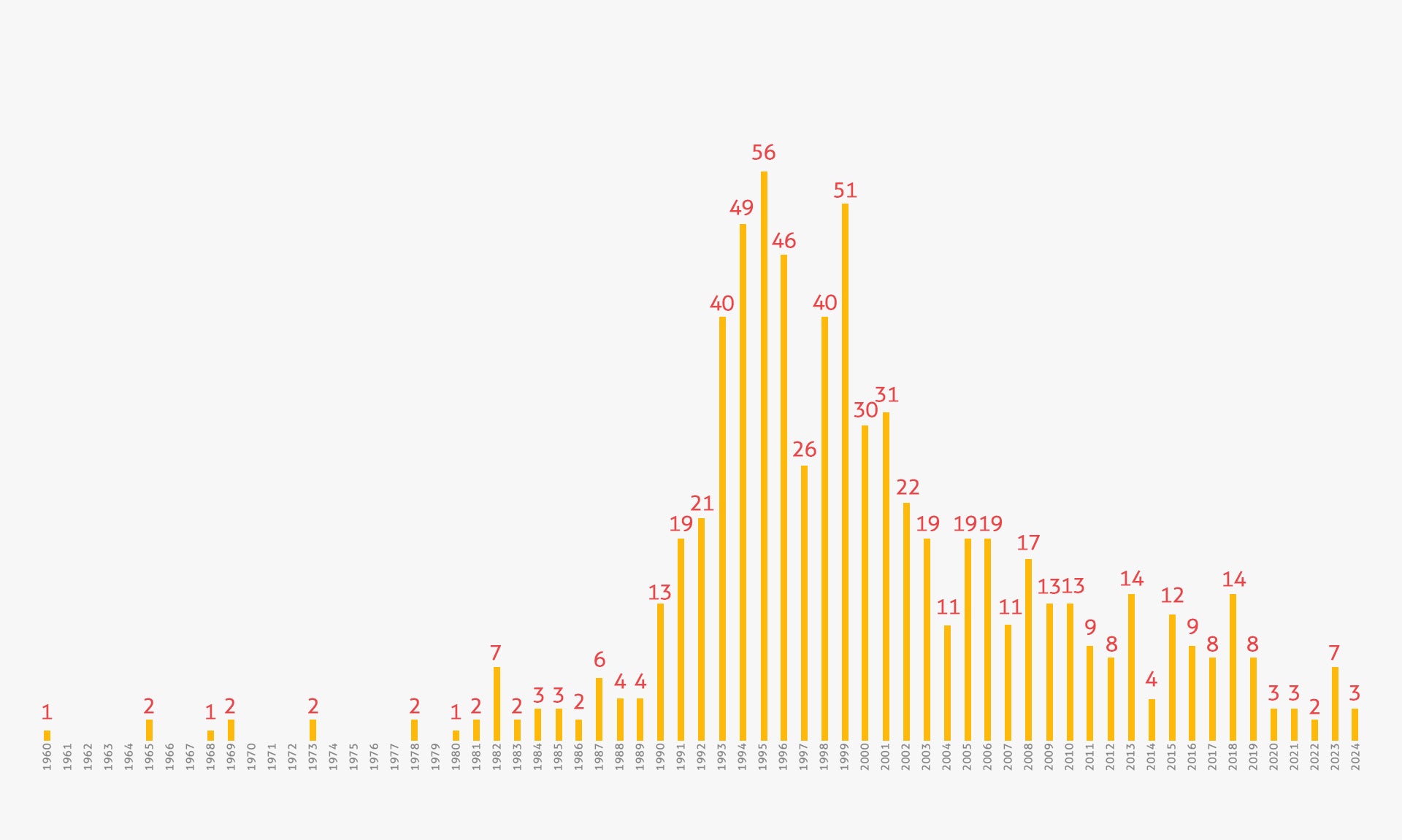
Although the signing of treaties on the ordering of international investment started in LAC in the 1960s, a veritable boom occurred in the 1990s. Since then, LAC states have continued to enter into these treaties but at a slower pace
International Investment Agreements in LAC
International Investment Agreements (IIAs), which take the form of stand-alone Bilateral Investment Treaties (BITs) or investment chapters within Free Trade Agreements (FTAs) are the most common but are not the only type of agreements with rules on international investment. In addition to IIAs, there exist in Latin America Cooperation and Facilitation Investment Agreements (CFIAs) pioneered by Brazil, plus a wide array of other treaties with investment provisions.
BITs and investment chapters of FTAs are typically grouped together as “IIAs” because they are the only type of investment treaties with ISDS. Note, however, that not all IIAs provide recourse to ISDS. How many of the treaties in force on the ordering of international investment in LAC are IIAs that provide recourse to ISDS?
IIAs and CFIAs are the most prolific type of treaties on the ordering of international investment. How many of these treaties in LAC are already in force and how many are en route to entering into force? (For purposes of our analysis we assume that treaties signed more than 20 years ago are no longer en route to entering into force)
Number of times that Treaties with ISDS were signed between 1960-2025

Number of times that Treaties with ISDS got in force between 1960-2025
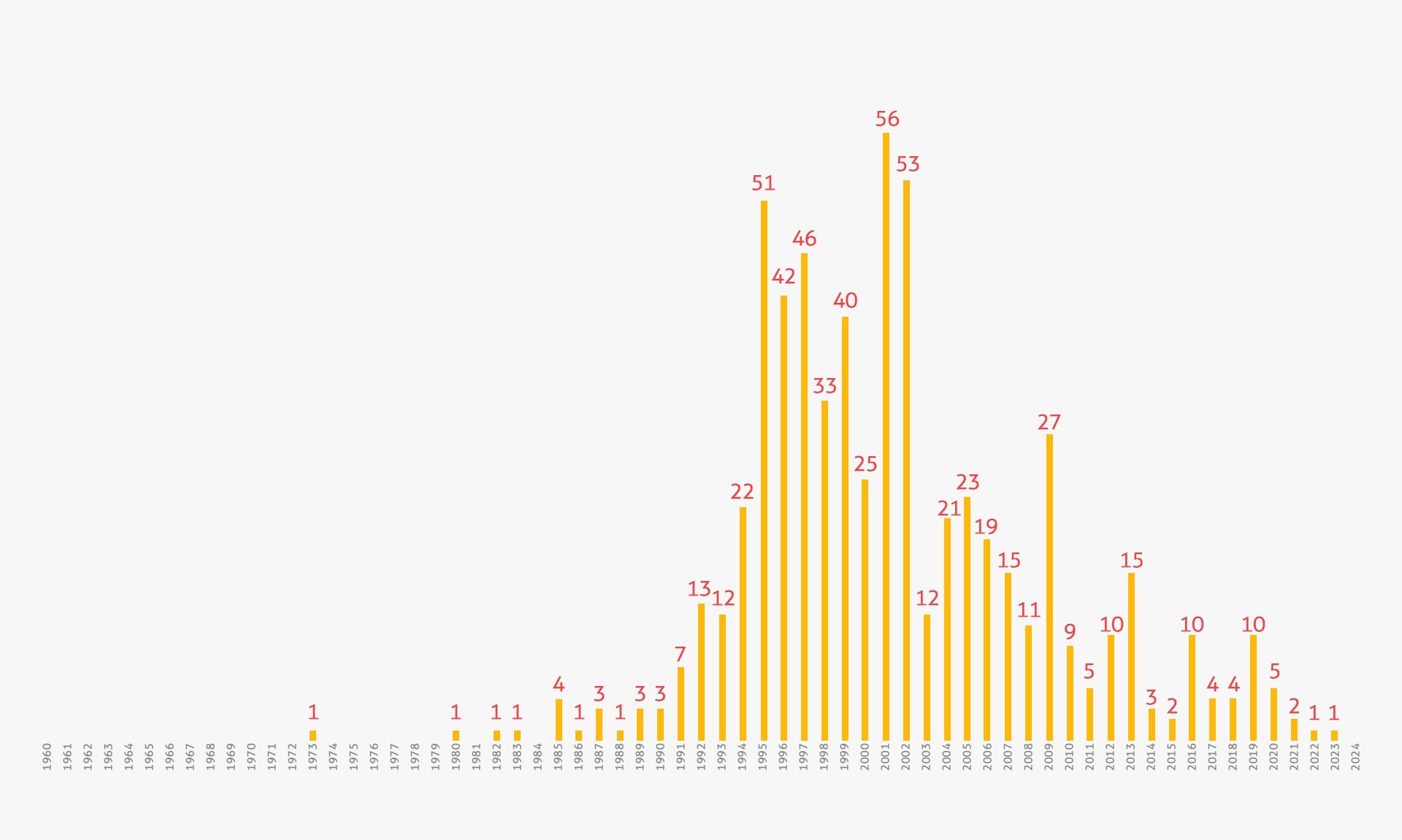
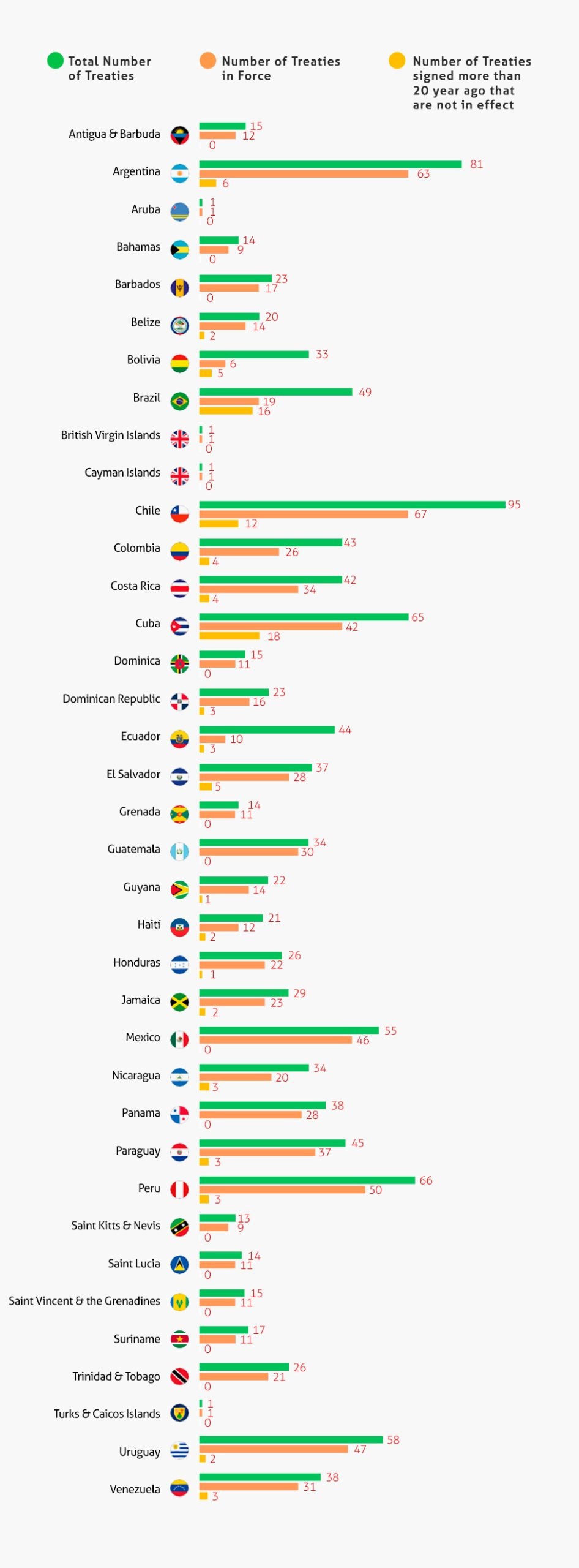
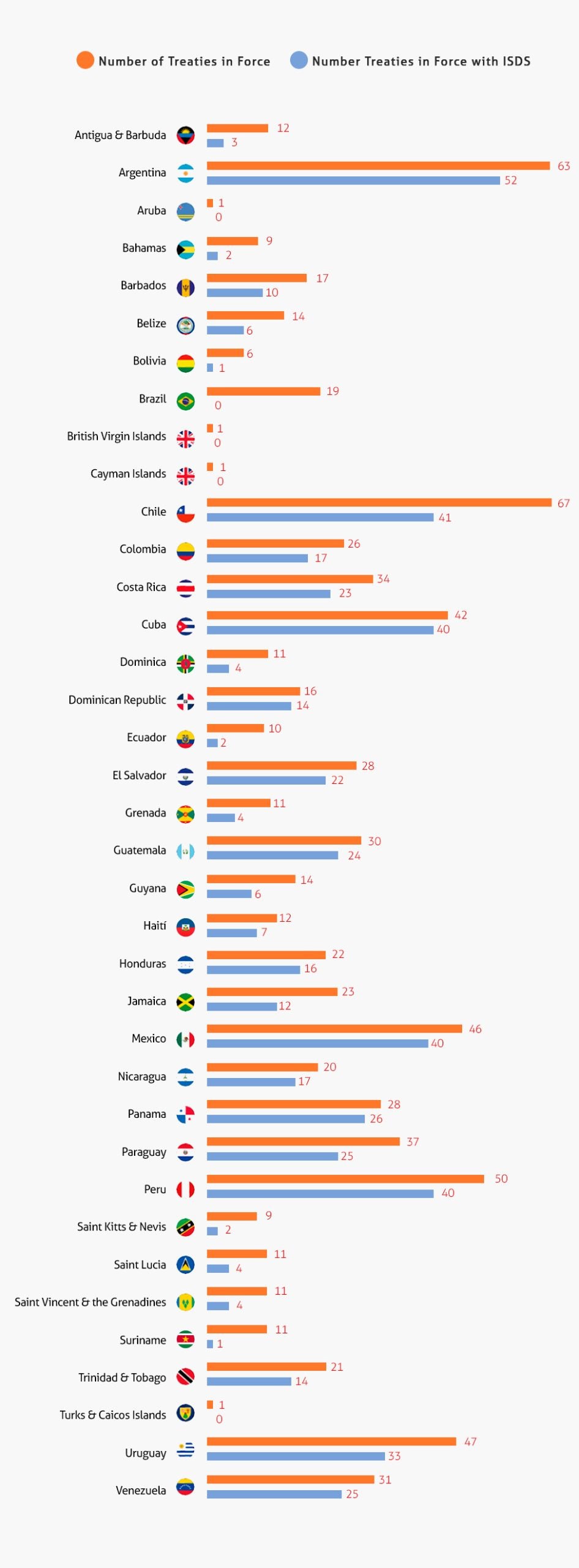
Termination of Treaties on the Ordering of International Investment in LAC
BEGINNING IN 1999, LAC STATES STARTED TO TERMINATE THEIR INVESTMENT TREATIES. AS OF JANUARY 2025, A TOTAL OF
120
TREATIES HAD BEEN TERMINATED
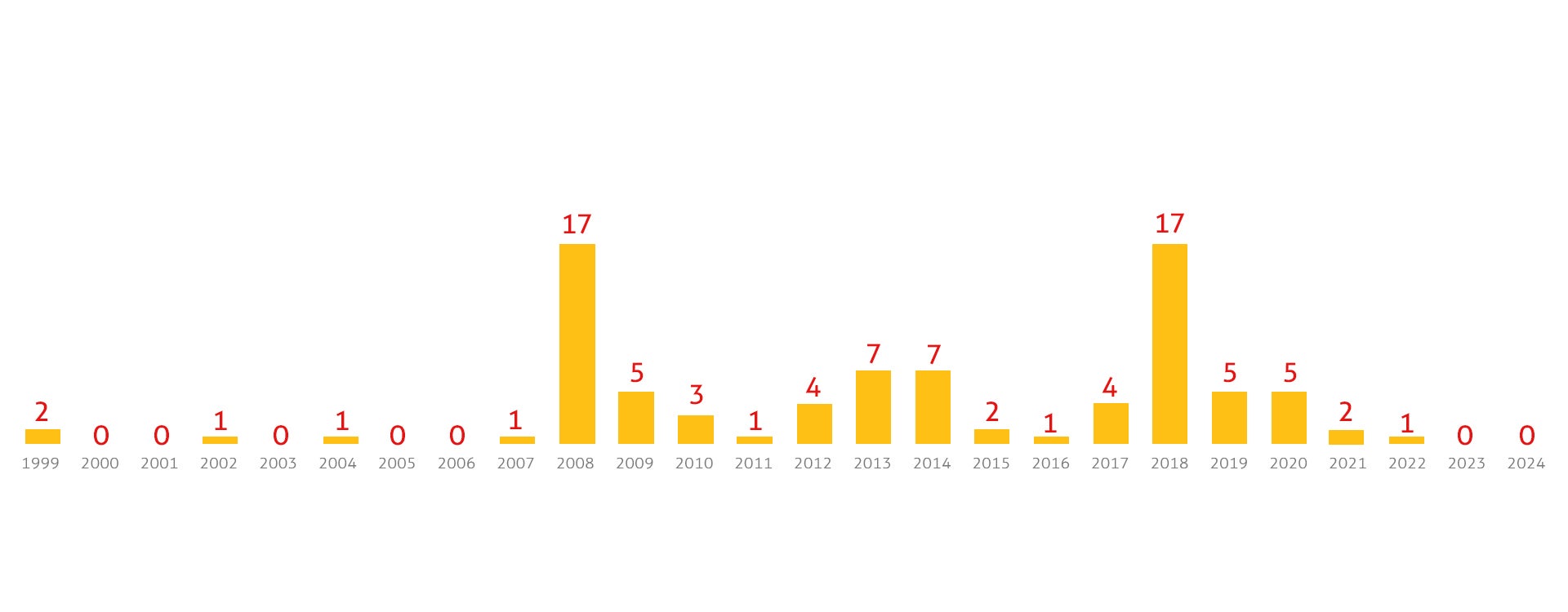
Number of times that Treaties with ISDS were terminated between 1999-2024
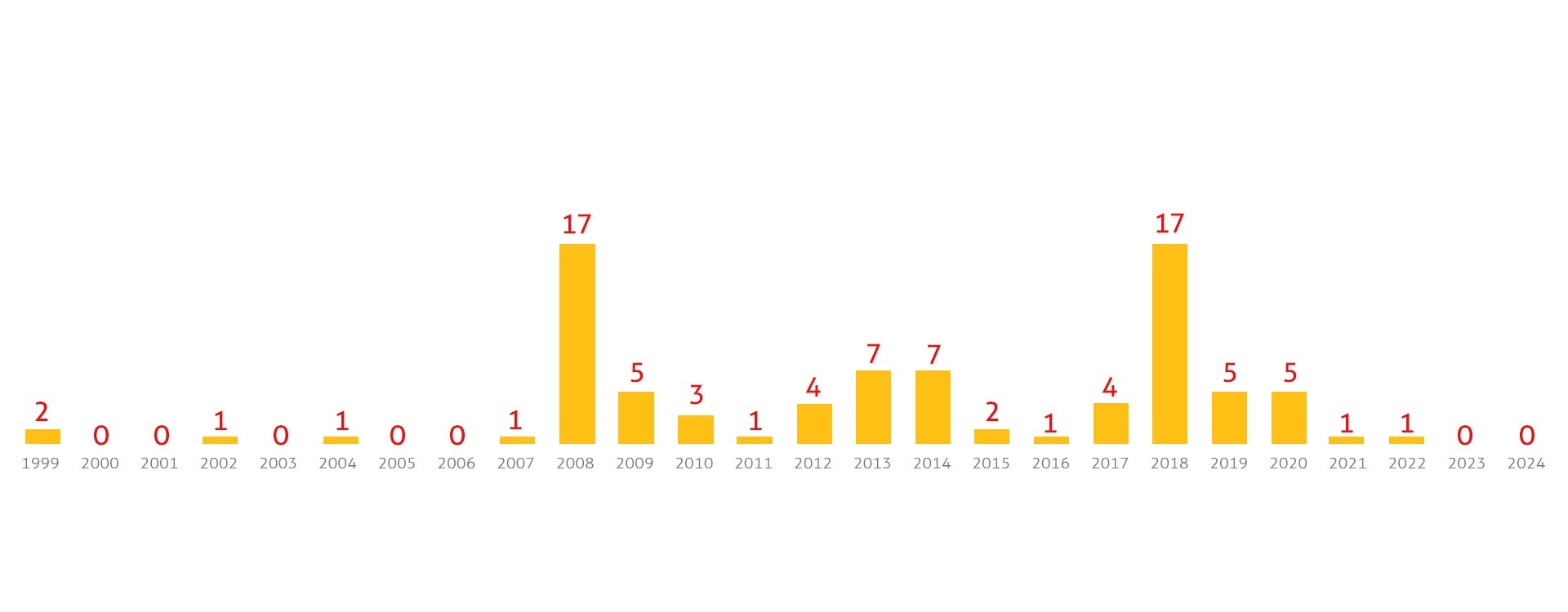
Termination of an investment treaty can occur for several reasons: it may result from mutual consent, typically for cases in which parties agree to enter into a new or updated treaty; it may follow from the expiration of a timeframe set out in the terms of agreement that call for renewal to continue, or; it may come from unilateral denunciation, subject to the provisions on unilateral termination set out in the agreement, which often include terms on the survival of the agreement for a specified period of time in respect of investments made before termination (so-called sunset clauses). How many of the terminations in LAC where the product of unilateral action? The chart below compares total terminations with denunciations


